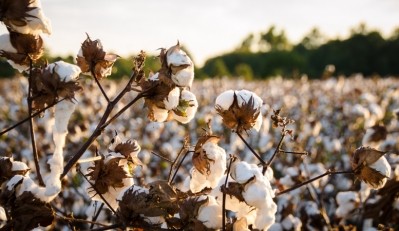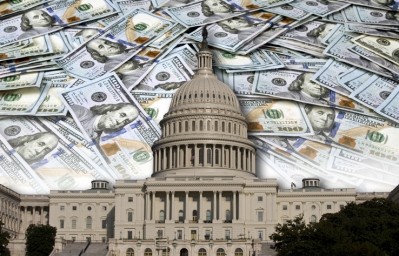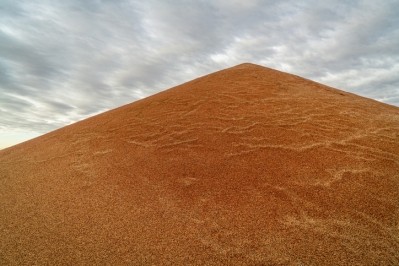US producers' mixed feelings about USDA feed crop funding

The US Department of Agriculture (USDA) announced the launch of its second round of trade mitigation payments on Monday [December 17].
The goal of the payment system is to support farmers “suffering from damage due to unjustified trade retaliation by foreign nations.”
The payment program is open to producers of specific feed grains and select other crops along with some animal producers, the USDA said.
The initial phase of the support program was announced in July and started in September. The intention was to assist producers in dealing with trade uncertainty, the department said. The USDA called the support offerings a “short-term relief strategy.”
“While there have been positive movements on the trade front, American farmers are continuing to experience losses due to unjustified trade retaliation by foreign nations,” said Sonny Perdue, US secretary of agriculture. “This assistance will help with short-term cash flow issues as we move into the new year.”
Several feed crop producers organizations have applauded the release of the second round of payments, but the National Corn Growers Association (NCGA) also was critical of the calculation process used.
Producers for all feed crops have seen the influence from the trade tariffs, said Lynn Chrisp, NCGA president.
The association supports the administration’s work on trade including the new agreement with Mexico and Canada and progress toward negotiations with Japan, however, those efforts will take time to generate benefits.
“One cent per bushel is woefully inadequate to even begin to cover the losses being felt by corn farmers,” he said in a release. “USDA did not take into account the reality that many of our farmers are facing.”
Producers support payment overview
The initial short-term program established by the USDA included three programs – the Market Facilitation Program (MFP), the food purchase and distribution program and the Agricultural Trade Promotion program administered by the Foreign Agricultural Service.
The MFP provided a payment to producers of feed crops including corn, sorghum, soybeans and wheat along with almond growers, cotton, fresh sweet cherry and dairy and hog producers, the USDA said.
The first set of payments provided funds based on the first 50% of production generated in 2018.
Producers now will be eligible for a second payment based on production in 2018, the department said.
The payment is calculated using the remaining 50% of the amount generated and using a set payment rate by feed grain or commodity.
For feed crop producers, corn will receive $0.01 per bushel, soybeans $1.65 a bushel, sorghum $0.86 a bushel and wheat $0.14 a bushel, the department said. Dairy producers receive $0.12 per cwt and swine producers $8 per head.
The sign-up period to apply for the funding runs through January 15, the department said. However, producers who have already applied for the first round of funding do not need to apply a second time.
All MFP combined feed grain and crop payments are limited to $125,000 per person or legal entity, as are payments for dairy and hog producers and sweet cherry and almond producers, the department said.
Applicants also need to have had an average adjusted gross income of less than $900,000 for the tax years 2014-2016 and comply with regulations for highly erodible land and wetland conservation.
The food purchase and distribution program is set to buy up to 1.2bn in commodities that were “targeted” for trade retaliation, the department said.
Current planning calls for purchases in the program to continue throughout 2019.
The trade support program collected applications aimed at expanding export markets for producers, the department said.
The application period for the program ended in November. It will provide about $200m in funds and announce the awards made in January.
Feed crop industry response
Responses to the announcement of the second round of funding were somewhat mixed as feed crop producers welcomed the news, but some decried how the support was allocated.
The NCGA said it was disappointed that corn producers were receiving little support through the MFP.
Corn producers have lost about $0.44 per bushel since the start of trade uncertainty earlier in 2018, the group said. However, they will get $0.01 from the USDA’s payments.
In November, the group wrote an open letter to Perdue to ask for changes regarding the information used to determine the second round of payments.
The organization asked for corn-based products like dried distillers grains with solubles (DDGS) and ethanol to be considered and for an alternative production calculation for producers who lost part of their crop to disaster.
“Corn prices have fluctuated and have declined pretty significantly as a result of trade uncertainty,” Lesly McNitt, NCGA director of public policy for trade and biotechnology told FeedNavigator at the time.
“Initially NGCA went to USDA when [it] made clear that trade relief would be available,” she added. “Our analysis showed that the price of corn declined by an average of $0.44 a bushel or about $6.3bn hit to corn farmers – we made the case then the impact from trade uncertainty should be taken into account.”
The association heard from members that the relief provided was “insufficient” given the economic effect they were experiencing, she said.
“Farmers are really hurting right now and $0.01 per bushel felt like [adding] insult to injury for a lot of NCGA’s members and corn farmers,” McNitt said. “As we learned more about USDA’s the methodology there were some insufficiencies there – it’s a pretty narrowly scoped methodology.”
The American Soybean Association (ASA) had called for confirmation of the second round of payments last week, and welcomed the announcement, its members said.
The financial support helps offset the drop in prices producers have faced but does not make their “losses whole,” added Davie Stephens, ASA president.
The group also is supporting an end to the trade war with China to rescind tariffs on the feed ingredient and allow producers the opportunity to rebuild their export market.
The National Sorghum Producers organization also thanked the administration and USDA officials for providing the second round of payments.
“Sorghum producers are at the end of a difficult harvest season in many regions of the Sorghum Belt, and these payments will help mitigate the drop in prices sorghum farmers have faced since China stopped importing US sorghum earlier this spring,” Dan Atkisson, NSP board of director chairperson, said in a release.
The organization is encouraged by China’s soybean purchases, and sorghum producers are looking forward to being able to work with customers in that country in the future, he said.
“We remain hopeful these sales are a sign negotiations between the US and China will soon lead to a positive resolve,” he added.












